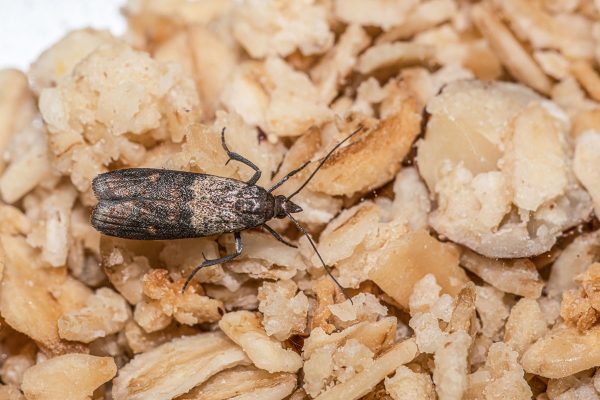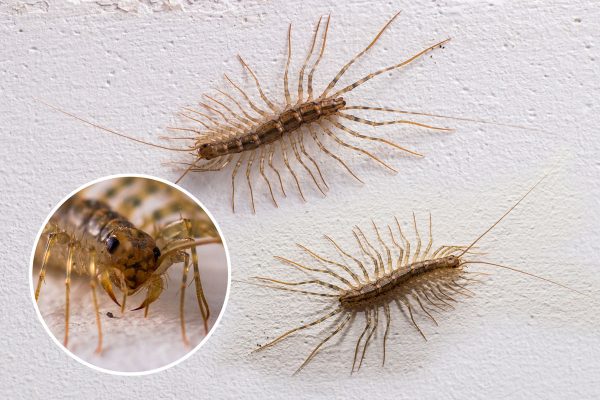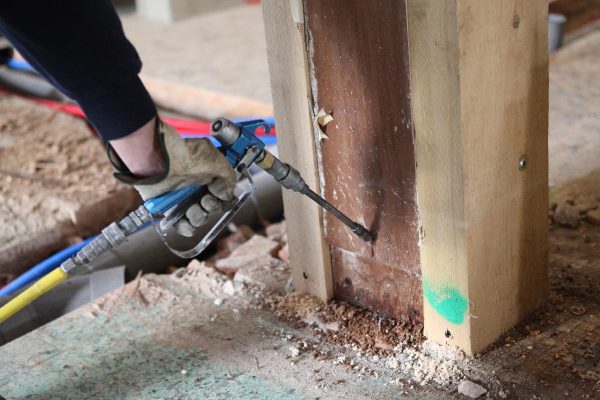The survival of humans relies on bees more than one would think. They are essential to the ecosystem, and the decline of their population should alarm everyone. So, if bees somehow get trapped in a wall, what should you do? How long can they actually survive? We have researched answers to find out.
Bees that are trapped within a wall only have about 1-2 weeks left to survive. During that time, bees will desperately look for an exit route, often following a beam of light during nighttime.
When you see a bee, or any insect, in your home, your first instinct is to swat it. Worse, you may try to spray it with a harsh chemical. However, there are other safe and non-violent ways you can let bees go on their way—after all, we want to do our part in saving their population. Keep reading below to learn more about how to manage bees on your property.
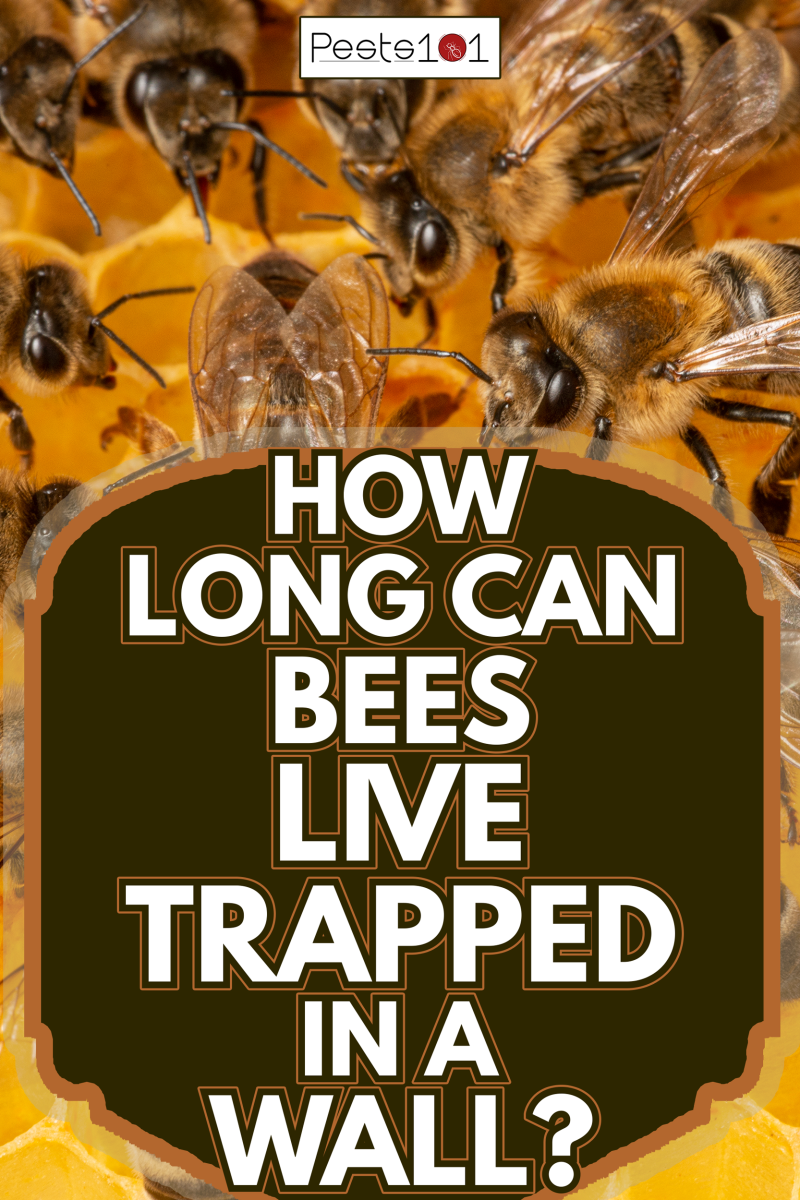
How to Safely Get Rid of Bees Around Your Property
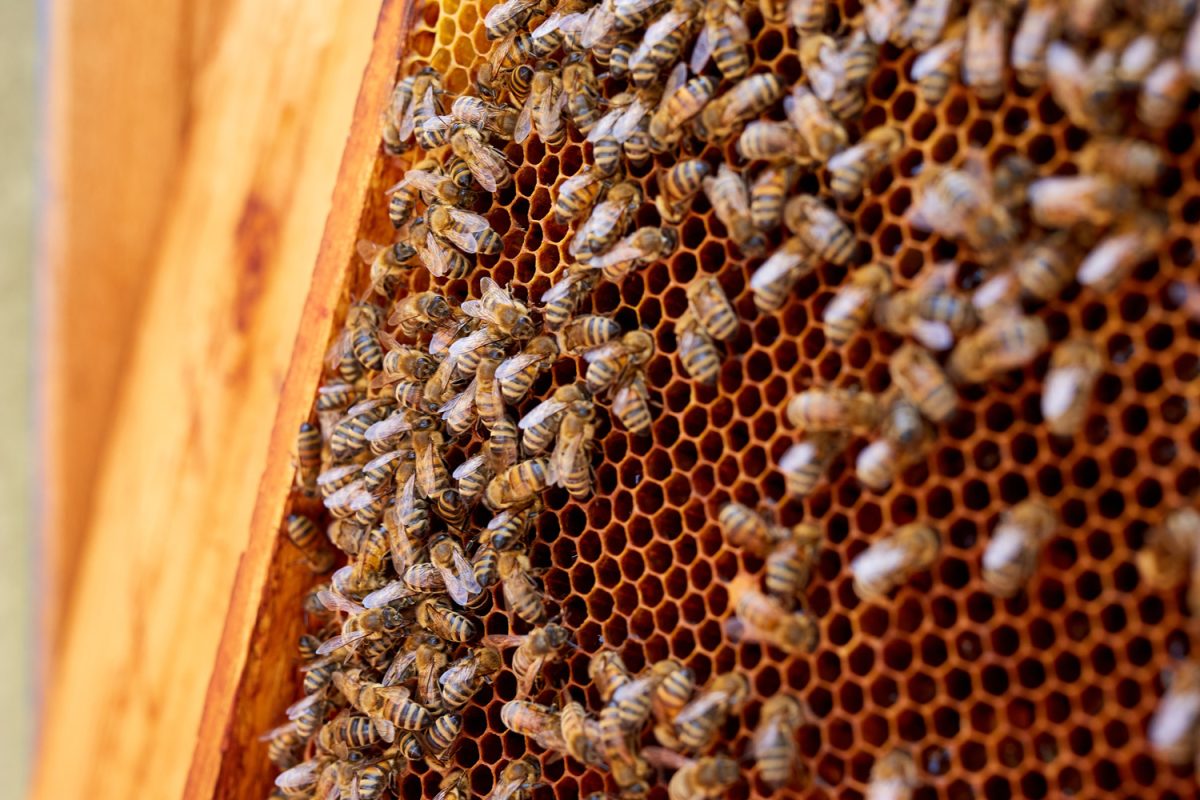
If you've discovered a bee--or an entire hive--hiding around your house, don't succumb to panic and spray them with harsh repellents. Bees are a "necessary evil;" although they can be overwhelming, they are essential to keep pollination and agriculture thriving.
Instead of killing them and contributing to their declining population, opt for safer and non-violent methods to get them out of your home. Here are methods you can try.
Smoke Them Away
Aside from the offensive smell that bees are sensitive to, bees see smoke as an indication that a place is on fire and no longer safe. Burn cardboard or paper and place it underneath the beehive, but make sure that all the bees are inside their hive before you create a smoke.
It may take a long time for the bees to completely migrate, so try to start earlier in the night.
Smoke reduces the bees' ability to detect even the lowest concentration of pheromones, making them disoriented. It's a cheaper way to get rid of bees, and the effect is reversible and won't do permanent damage to the bees' systems.
Their sense of smell will go back to normal within 10-20 minutes, at which time most of the bees might have already migrated or been subdued by a beekeeper.
Light A Citronella-Scented Candle
The scent of Citronella offends honeybees and bumblebees. It will not harm them, but it will make them stay away from the perimeter. Simply light a citronella candle or burn citronella essential oils to repel the bees--this will effectively repel them without killing them even when the bees are indoors.
Do all bees hate citronella?

Not all bees hate the scent of citronella. If you are dealing with sweat bees, it may create a reverse effect and attract them to the smell. Sweat bees need to be repelled by mint-scented oils or candles since they find the smell more offensive.
Use Moth Balls
Another smell that bees find terrible is the smell of mothballs. Handle these cautiously since they contain a toxic chemical that can cause dizziness and nausea. Hang the balls near the hive, observe for a few hours, and you should see the bees start to migrate.
However, when using mothballs, make sure that the beehive is not located indoors, or anywhere near an enclosed space since it can be toxic to bees. Use this only when the hives are outdoors where the bees can escape it.
Call A Beekeeper
When all else fails, or if you're not confident about getting rid of bees safely, call a beekeeper instead. They will know how to safely remove the bees without killing them, and they'll know the best place to let the bees do their job at keeping the ecosystem alive better.
Beekeepers will not only take the infestation off of you; they will closely monitor the hive so it remains in good condition.
Calling a beekeeper is the smartest and safest route you can take. It can be impossible if you do it alone, especially if you're dealing with a huge colony.
How long do bees live?
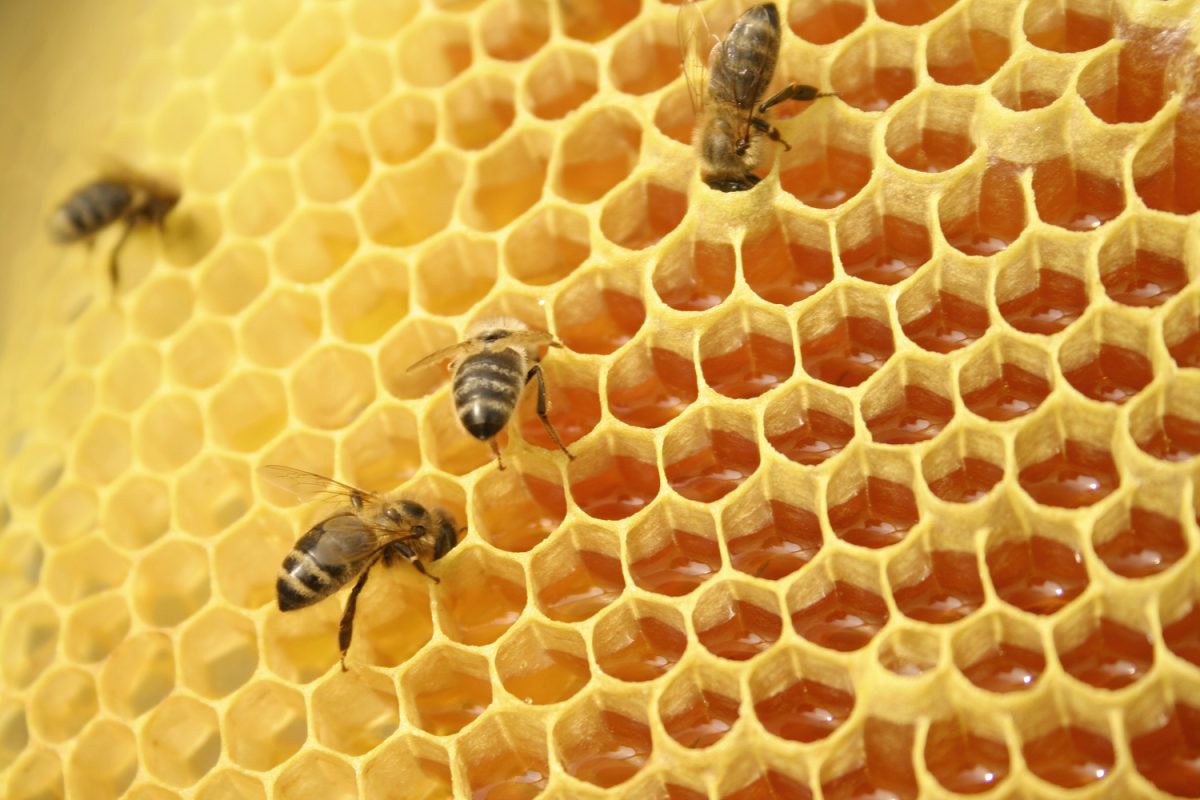
The lifespan of bees depends on their species and hierarchy within the hive. Honeybees, for example, have a lifespan ranging from 2 weeks to 5 years.
Honeybees
Worker honeybees that were born during the spring or summer season live for 2-6 weeks. Worker bees born in the autumn live for up to 20 weeks since they have no brood to care for. Drones, or male bees whose only purpose is to mate, have an average lifespan of 30-55 days.
Although drone bees don't have many purposes, the colony doesn't eliminate them since a new queen might need to mate. After a drone mates with the queen, it immediately dies.
Bumblebees
Bumblebees have a different lifespan, and climate change is affecting that lifespan as well. Queen bumblebees live for a year, with most of that part being spent in hibernation after mating and feeding.
Male bumble bees live for a few weeks, while worker bumblebees also only live for 2-6 weeks. However, they may live longer if they live in tropical areas with a lot of forests and flowers that make the colony thrive.
The reason bees usually don't live longer in wintry areas such as Northern Europe is that they don't have enough pollen to collect because the seasons don't allow it. So, they usually migrate to warmer places teeming with gardens, orchards, or domesticated environments.
How do bees reproduce?
Bees do not reproduce within the hive since this can create a genetic anomaly. Queen bees fly away from the hive, accompanied by worker bees, and search for potential mates.
The queen mates with a drone mid-flight. The male bee's endophalus releases sperm into the queen then breaks off as the male bee disconnects and starts to die. After that, the queen mates with other drones, around 12-20, filling her spermatheca (or sperm receptacle) with semen.
Once her mating is finished, she returns to the hive where she gives birth to several worker bees and never goes out again.
However, an isolated colony of bees called Cape bees located in South Africa has evolved to no longer need male bees in order to reproduce.
They have managed to reproduce asexually by laying eggs fertilized by their own DNA, which somehow created genetic differences from bees that were sexually reproduced.
For example, they developed a behavior called social parasitism where they invade other bee colonies and reproduce asexually, taking over the hive.
Where do bees build hives?
Honeybees build their hives in the hollowed parts of trees, rock crevices, and other areas they deem fit to build their colony.
Bumblebees live in shaded corners where sunlight can barely reach them. They avoid overheating their nests, so they stay in cool, shaded areas usually under trees or rocks.
Of course, these bees will always settle in areas near flowering plants where they can collect pollen and nectar, helping the ecosystem thrive at the same time.
Their beehive is a complex structure that came from the bees themselves. The liquid nectar becomes honey as it gets mixed with a special enzyme in their pouches and then transferred from one worker bee's tongue to another.
After that, the sugar content of honey turns into wax. The worker bees chew on it until it becomes moldable, then use it to form another hexagon vessel into the honeycomb where it will house developing bees, nectar, and pollen.
Are bees dangerous?
Although bees sting, they don't do it for no reason. They only sting when they sense a threat, which is why you need to be careful when handling a colony of bees.
If you are allergic to bees, make sure to stay away from the area where they are nesting and call a beekeeper immediately.
Why are bees declining in population?
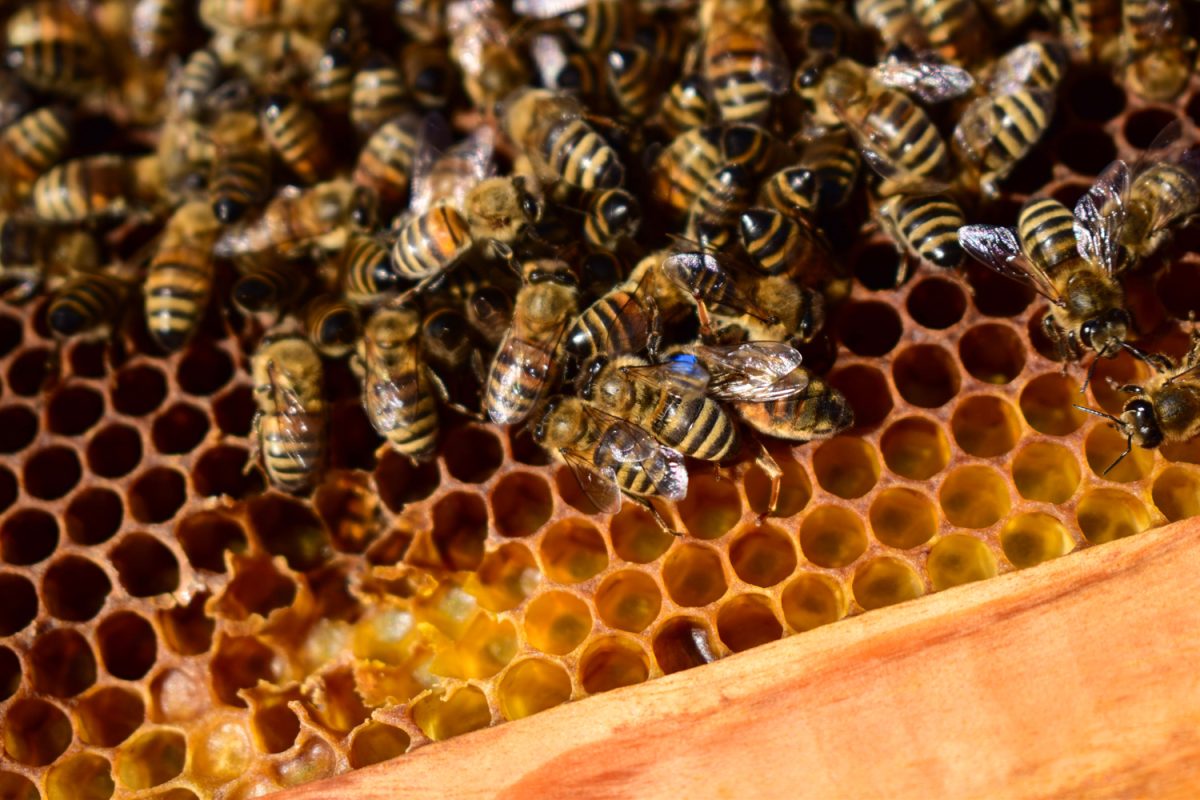
Bees are starting to become endangered because of poor practices brought by harsh pesticides. Pollution and climate change also play a part: when meadows and grassy lands are converted into urban spaces, bees will no longer have anything to feed on. Eventually, they will die.
Without bees, plants will no longer reproduce. Eventually, all animals that depend on these plants will have nothing to eat, disrupting the food chain and dramatically altering the ecosystem resulting in famine.
Final Thoughts
Although bees can be a nuisance, we need to handle them with care if we find them in our area--indoors or outdoors. They are necessary for our survival, and we lose nothing by applying safer practices when managing them.
If you liked this article, check out "Can You Mix Sevin Dust With Water? [And How To]" or "Where Do Odorous House Ants Live?"

